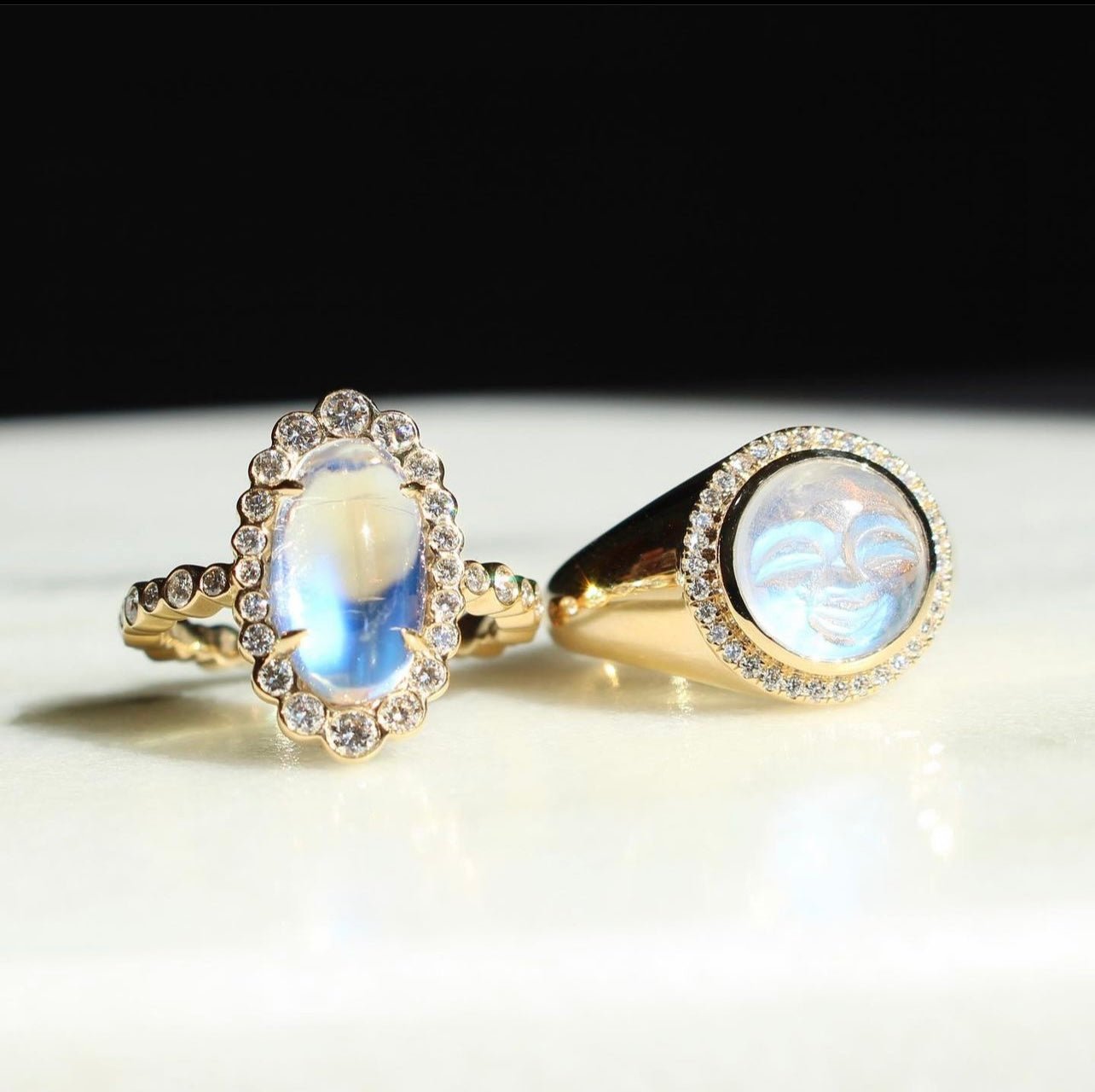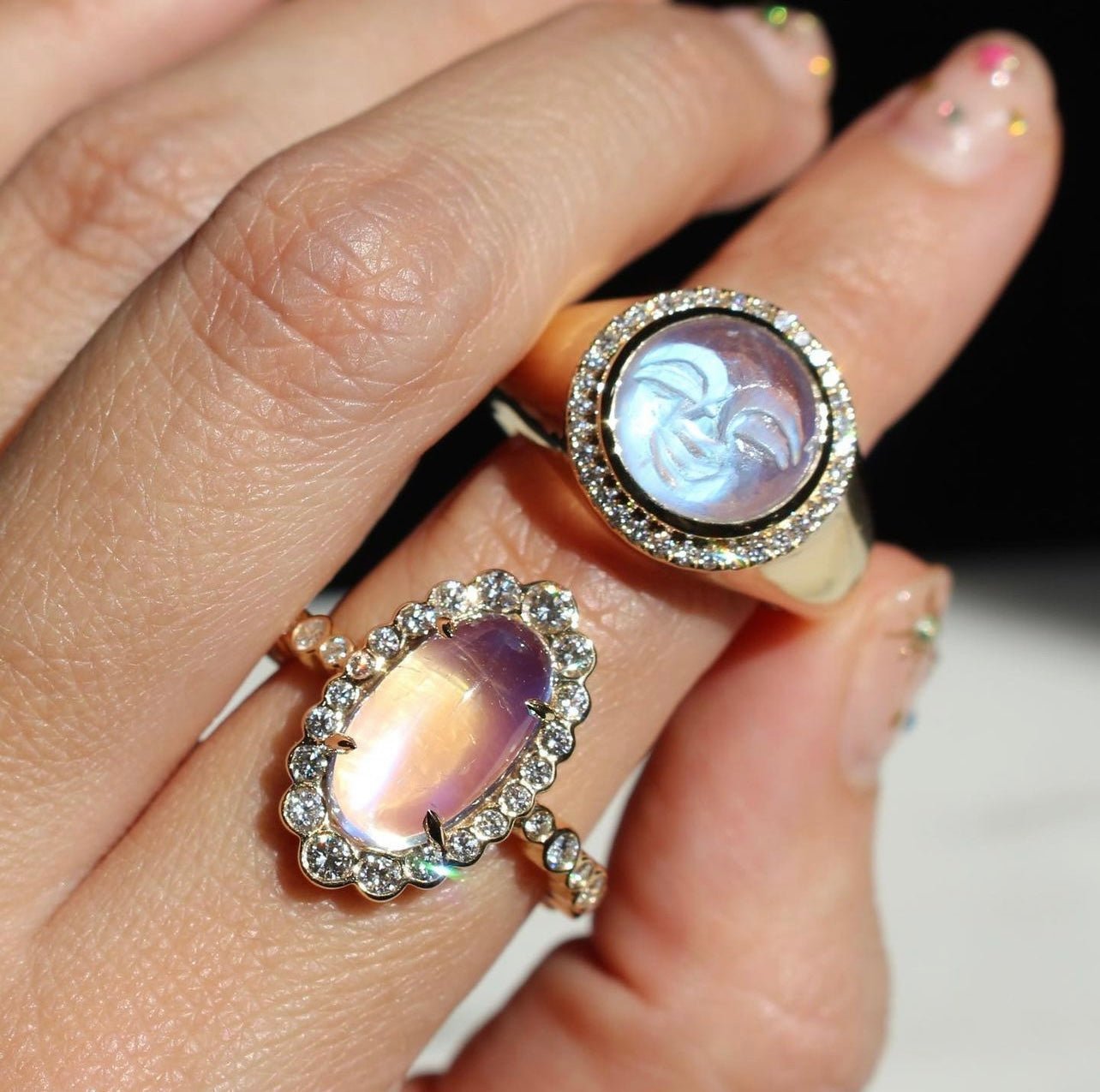The thing about precious gemstones is that you can never have enough! But when it comes to ultra-rare precious gems, you’ve probably only dipped your toe into the waters. No matter how much research you do, there will always be another door to unlock and another magical world of luxury to discover.
Next up on our itinerary is to introduce you to the beauty of Paraiba tourmaline, the exquisite blue-green gem.
If you have never read about this gem in our many exploratory articles before, it is one of our absolute favorites. While we are known for our stunning array of alexandrite and moonstone, there is something truly different about this find.
Since Paraiba tourmaline is so hard to come by, the price correlates with its elusive rarity. However, this is not something to be intimidated by. Once you learn the true value and rarity of this gem, you’ll be in the best position to seek out fair and accurate pricing based on size, color, cut, and clarity.
What Is the Paraiba Tourmaline?
Before we jump into pricing specifically, we need to show you the impressive properties of this gem.
We can begin with its unique origins.
Location, Location, Location
The most important part of this type of tourmaline is where it comes from: Paraiba, Brazil. Without its specific location, it is simply another piece of tourmaline. This is lovely in its own right, but it doesn’t measure up to quite the same standards.
Paraiba, Brazil, is a region with sprawling hills, the perfect place for minerals to develop. Miner Heitor Dimas Barbosa was the leader of an expedition into this area for roughly nine years, ranging from 1981 to 1989. It wasn’t until 1986 that he stumbled upon tourmaline, and not until 1989 that he solidified his discovery of the rare Paraiba variety of the gem.
The majority of the tourmaline from Paraiba is in smaller pieces. If you are able to get your hands on a Paraiba tourmaline that is not cracked or broken and over 5 grams in size, you have truly struck… Well, Paraiba! These gems are obviously more expensive than the more diminutive pieces.
Characteristics
Paraiba tourmaline itself is developed inside of crystalline schists through mainly granite. It is well known for its brilliant color, often described as “neon” blue. This is determined by how much manganese, chrome, vanadium, and iron were in the ground at the time of the tourmaline’s formation.
If there happens to be a lot of manganese, the gem might appear more violet or red. Therefore, it is less expensive and less desirable. More copper content makes the blue more potent.
The gem has a hardness on the Mohs scale of 7-7.5, which places it near alexandrite. It is quite durable but does still need to be monitored when knocked about in rings or bracelets. It has no cleavage and is highly wearable.
Common enhancements are heat treatment and laser treatment to lighten up stones, bring out blue colors, and diminish inclusions that may blur the gem.
Color Determines Price
Saturation is what matters most when it comes to the value of Paraiba tourmaline. People prefer the neon quality of the blue that comes from Paraiba, which is why it was so successful in the first place.
Blue-green tourmaline can be valuable, but it starts to decrease exponentially from there once other hues are added in or if the green undertone is strong. Only the purest and finest Paraiba has that iconic blue color.
Gemologists determine value by a saturation scale of 4 to 6, with the most desirable color depth landing at 6.
There are, in fact, entirely different kinds of tourmaline altogether. For example, chrome tourmaline is incredibly green, while rubellite is everything from ravishing red to orange.
If you’re looking for something extra unique, check out watermelon tourmaline with its fascinating effect of a pink inside and green outer layer. All of these varieties do not compete in price to Paraiba.
Consider Clarity and Cut
Next in line to price determination is how clear your gem is. Paraiba tourmaline that is very blue but muddled in appearance might depreciate rapidly. This is where cutting comes in.
Paraiba tourmaline is expected to have inclusions. They are natural and normal. For the most part, these inclusions can be rectified without severely damaging the value.
You want to make a gem as brilliant as possible, and finding the perfect custom cut and shape aids this process. Since tourmalines are pleochroic, the gem is usually cut to show how deep the color is in brilliant pear and ovals.
Deal or No Deal
At the height of Paraiba tourmaline’s popularity, it sold for $20,000 per carat. This is partially due to the exceptionally limited supply. Another large factor that contributed to the soaring value is the public’s admiration. Japan, in particular, adored Paraiba tourmalines, and gems in 3 to 5 ct were sought for tens of thousands of dollars.
Nowadays, smaller sizes of Paraiba tourmaline are much more common. They are typically only sold below one carat. Paraiba tourmaline ranges between $2,000 and $5,000 per carat from most sellers. Since the supply has been mostly exhausted now, this price is likely to rise over time. Many are looking to invest in this gemstone before the price crashes through the ceiling.
Beware of Scams
While we always advocate to trust and embrace the jeweler community, we’d be wrong to steer you in the wrong direction. Due to the rarity of Paraiba tourmaline, lab-created and fraudulent spinoffs of the gem have been made readily available.
Here are some ways to spot them and avoid them promptly if you’re looking for the real deal:
What Does Lab-Created Mean?
When it comes to precious gemstones, lab-created varieties can be a bit confusing. This is because they imitate many of the same growing processes (albeit at a sped-up timeframe) in order to possess many of the same physical characteristics.
For example, the chemistry of the gems is actually almost identical. However, they do not cost the same price because they are not rare. They are mass-produced, so they do not hold the same value.
Lab-created tourmaline might not have any inclusions like real tourmaline, but believe it or not, this doesn’t add to its inherent worth. In fact, since tourmaline is still considered high quality with or without inclusions, having no evidence of them makes lab-created gems appear even more suspicious.
It is just another sign that the gem is not natural. Paraiba tourmaline itself usually only has a few inclusions, but they are rarely entirely absent from the stone.
Read the Fine Print
The good thing is that most gemology societies require major retailers to be open about their processes and goods. That means you should have a certificate that any of your purchases are authentic or inauthentic upon your request.
You can also always get your Paraiba tourmaline appraised or request this certificate before the point of purchase so you know for sure you are buying a natural Paraiba tourmaline.
Exceptional Options
Now for the best part — our collection. We are so proud to share our Paraiba tourmaline with you in all of its glory. Our options are versatile and exquisite, featuring everything from necklaces, free-floating gems, stylized pendants, rings, and signature bracelets.
One piece that we would love to highlight is our Petals Ring. With an entire 18 kt white gold band, it is off to an incredible start. What really captures your attention is the stunning flower bursting out of the front, encrusted with 0.71ct of pavé diamonds. The 0.86 ct Paraiba is incredible, showing off its blue-green hue, and it shines so brightly it even rivals the diamonds!
Our Electric Blue Collection is the perfect place to browse Paraiba offerings, and we suggest you search it up on our website. We promise that no matter what design you are looking for, you will not be disappointed.
Don’t Hesitate
Did you know that the Paraiba tourmaline is one of the birthstone options for October? This makes it the perfect gift for that special someone and is exactly why our jewelry options are so versatile. If gifting a friend a ring feels a bit too intimate, we suggest you look into earrings or bracelets.
The best part about the Paraiba tourmaline is how luxurious it feels. Dazzle your friends for years to come with the unbeatable gift of this gem. Or, maybe splurge on some for yourself. We think you deserve it, too.
Sources:
Paraíba Tourmaline Value, Price, and Jewelry Information | Gem Society
Tourmaline Quality Factors | GIA
Paraiba Tourmaline | International Colored Gemstone Association



